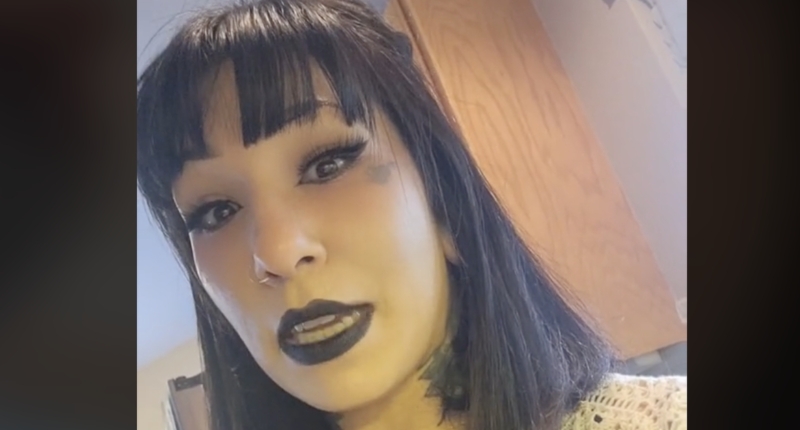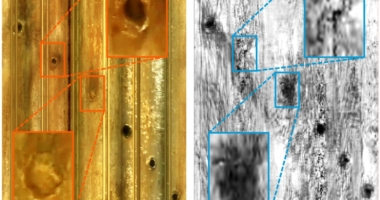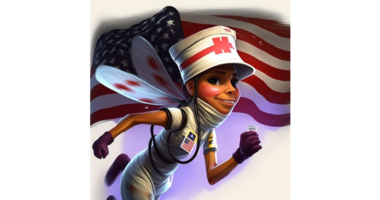TikTok is a platform for showcasing creativity, and users can share everything from dance to science content. Recently, a concerning trend has emerged on TikTok, with people trying to eat plastic, which has led to Fruit Roll Up’s official TikTok account having to post a video advising people not to eat the plastic that covers their fruit leather.
On the other hand, a viral video by YouTuber Mark Rober showcased an invention that could change everything: Zipline’s drone technology. Zipline is not only using the technology to deliver sandwiches quickly to wealthy Westerners, but they’re also using it to deliver medical supplies to remote hospitals in Rwanda, thus saving lives. The technology has the potential for near-instant delivery of anything people order and can reduce the number of cars and trucks on the road.
Overall, TikTok can be an entertaining and informative platform, but it’s crucial to distinguish between safe and harmful trends, and Zipline’s drone technology showcases the immense potential for innovation in the world.
The Rise of #DeathTok: How TikTok is Addressing Death and Pandemic
Youth culture has always been associated with extreme trends, and this includes the way technology affects them. The current generation is always connected to their devices, leading to bizarre trends like eating dog food or chewing plastic candy wrappers. However, technology also allows them to handle heavy subjects like death and disease in ways that were impossible before, creating a mixed bag of outcomes.
Despite TikTok’s reputation as the home of lip-sync videos and makeup tutorials, two recent trends demonstrate how the platform enables young people to communicate with each other about life and death matters. This week’s Out-of-Touch Guide examines these trends and how they are changing the conversation around death.
The hashtag #DeathTok is a prime example of how the young generation is embracing the reality of death. Unlike previous generations, who tended to avoid discussing death altogether, Gen Z accepts and ponders on the concept of death. Videos using the #DeathTok tag consider various aspects of death, from the practical preparations of the corpse to alternatives to traditional burial methods. Others tackle more philosophical topics like whether tattoos can be preserved after death. Humorous videos on the topic are also present, featuring dark death-centric jokes that only people who have experienced loss can appreciate.
TikTok has also become a platform for young people to address the pandemic, from sharing their experiences and insights on COVID-19 to raising awareness about health and safety measures. The platform has become a source of comfort for those struggling with mental health issues, providing a space to talk about the effects of the pandemic on their lives.
In conclusion, technology has brought about new and unprecedented ways for young people to address serious issues like death and disease. Platforms like TikTok have become a valuable tool for communication and understanding, opening up new avenues for conversations that were previously difficult to have.
The Silly and Serious Sides of TikTok: How the Pandemic Changed Lives and Dog Food Trend
TikTok has become a popular platform for younger generations to share their experiences and insights on a wide range of topics. As the world just passed the third anniversary of the beginning of the COVID pandemic, TikTok users marked the occasion with a meme that reflected on how the pandemic changed their lives.
Under the heading “Things That Would Send March 2020 Me Into a Coma,” videos shared personal and confessional experiences during the pandemic. Despite some of the navel-gazing self-importance of young people, the overall tone of the videos was positive. Many used their time in lockdown to improve themselves, such as getting sober or achieving fame on the platform.
On the other hand, younger people are still learning about the dangers of eating things that are not meant for human consumption. One example of this is the trend of eating dog food, which started when a bodybuilding influencer made a TikTok video promising to eat protein-rich dog food if he got 15,000 likes. He ended up with over 2 million likes, leading to others trying it out as well. While eating dog food won’t kill you, it is not healthy or intended for human consumption. It’s important to remember that not everything we see on the internet is meant to be taken seriously.
In conclusion, TikTok is a platform that allows younger generations to share their experiences and insights on various topics. It can be a source of entertainment, education, and inspiration. However, it’s essential to remember that not everything we see on the internet is meant to be imitated.
The Danger of Eating Plastic and the Potential of Zipline’s Drone Technology
TikTok is a platform where users can showcase their creativity, whether it’s through cooking, dance, or science content. However, one trend that has recently emerged on the platform is concerning: eating plastic. An online user tried to make the recipe for Fruit Roll-ups with ice cream easier by omitting the ice cream and just biting into a frozen fruit roll-up, seemingly with the plastic still attached. Enough people duplicated the stunt that Fruit Roll Up’s official TikTok account had to post a video advising people that they should not eat the plastic that covers their fruit leather because it is indeed plastic. It also indicated that the first guy’s video might be fake, as biting through plastic is not possible, even if it’s frozen.
In contrast, a viral video this week on YouTube showcased a mind-blowing and serious invention that could change everything: Zipline’s innovative drone technology. This technology is not only used for delivering sandwiches quickly to wealthy Westerners but also for delivering much-needed medical supplies to hospitals in Rwanda. The improvements made to the idea of little helicopters dropping things off on your doorstep might make the technology feasible, leading to nearly instant delivery of anything you can order and a significant reduction in the number of cars and trucks on the roads.
What Zipline is doing in Rwanda is even more impressive. The company is using miniature drone-style crafts to deliver life-saving medical supplies to remote hospitals. This implementation is not just theoretical, but it’s actually happening right now. With this technology, people in remote areas can have access to the medical supplies they need to stay healthy.
In conclusion, while TikTok can be an entertaining and informative platform, it’s crucial to distinguish between trends that are safe and those that can cause harm. On the other hand, Zipline’s drone technology showcases the immense potential for innovation in the world, from improving delivery times to saving lives in remote areas.
Don’t miss interesting posts on Famousbio









